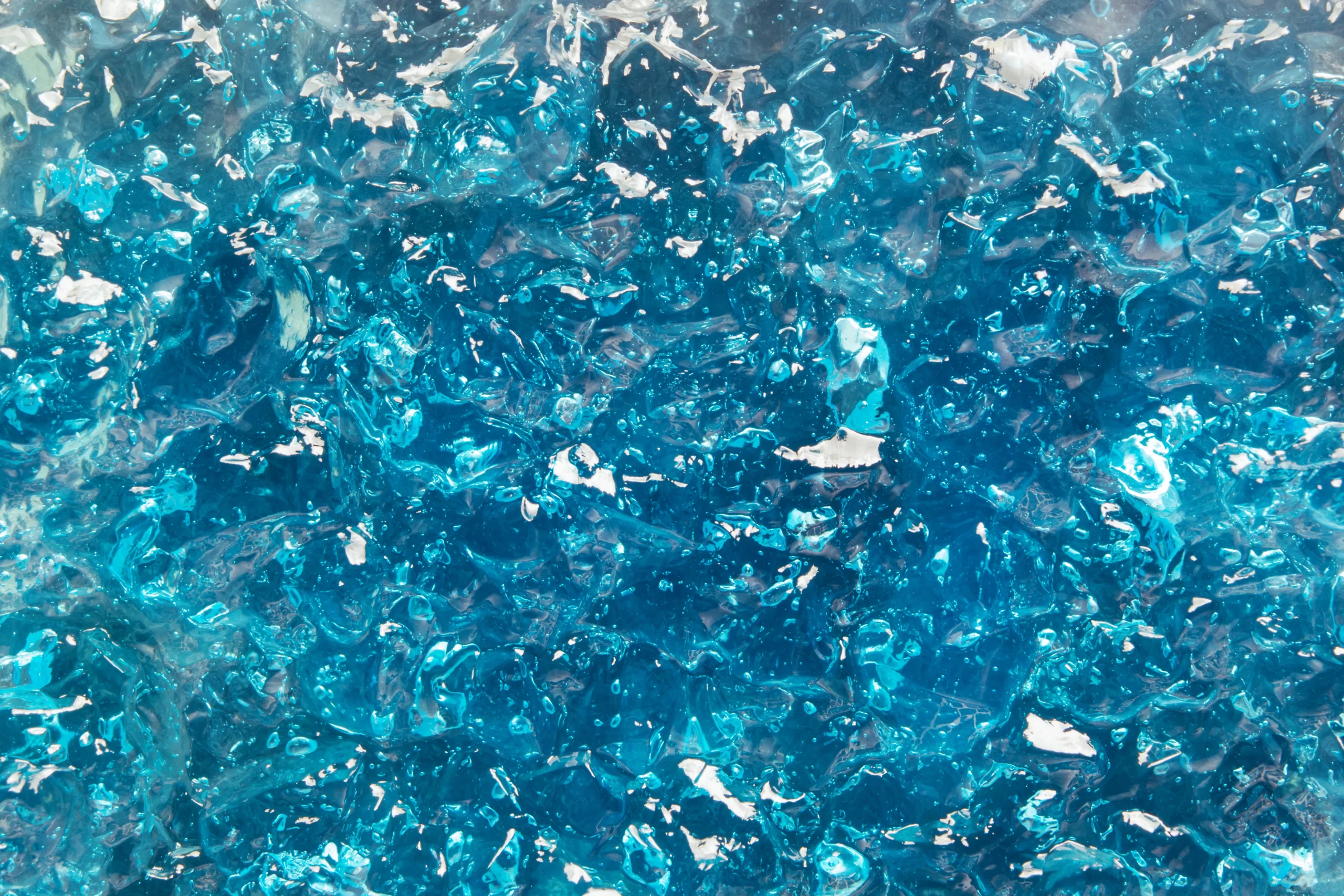Why Stem Cell Infusion in Malaysia?
Malaysia is a leading stem cell country, where you can receive high-quality and reasonably priced stem cell infusion.
Malaysia’s economy is growing so fast that it has been called the “honor student of Southeast Asia,” and it is already becoming one of the most developed countries in the region.
In fact, Malaysia is famous for its extremely high level of medical care, and the Malaysian government encourages medical tourism as a national policy.
In fact, more than 800,000 foreign tourists visit Malaysia every year for both vacations and medical examinations.
In particular, legislation and practical applications in the field of stem cells are in progress, and “state-of-the-art stem cell therapy” is provided under strict national control.
The number of stem cell culture centers is large, and stem cell therapy is available at high quality and low cost.
What is a stem cell infusion?
“Stem cell infusion” = a fundamental treatment in which stem cells themselves are introduced into the body
Stem cell infusion, in which stem cells themselves are introduced into the body, is completely different from “stem cell serum,” “infusion of stem cell supernatant fluid,” “placenta (placental extract),” etc.
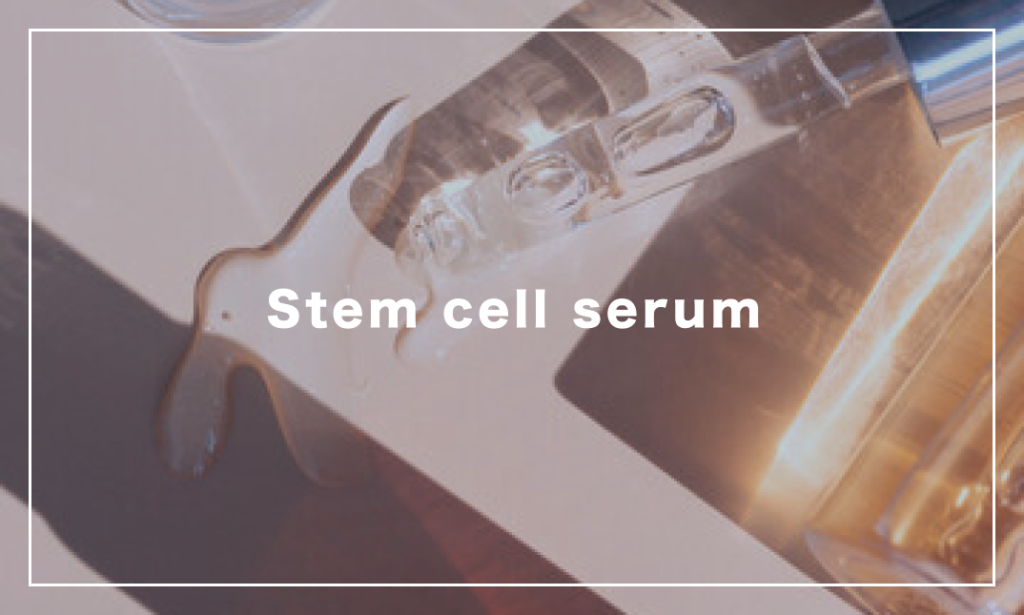
It contains only stem cell-derived ingredients, not stem cells themselves.
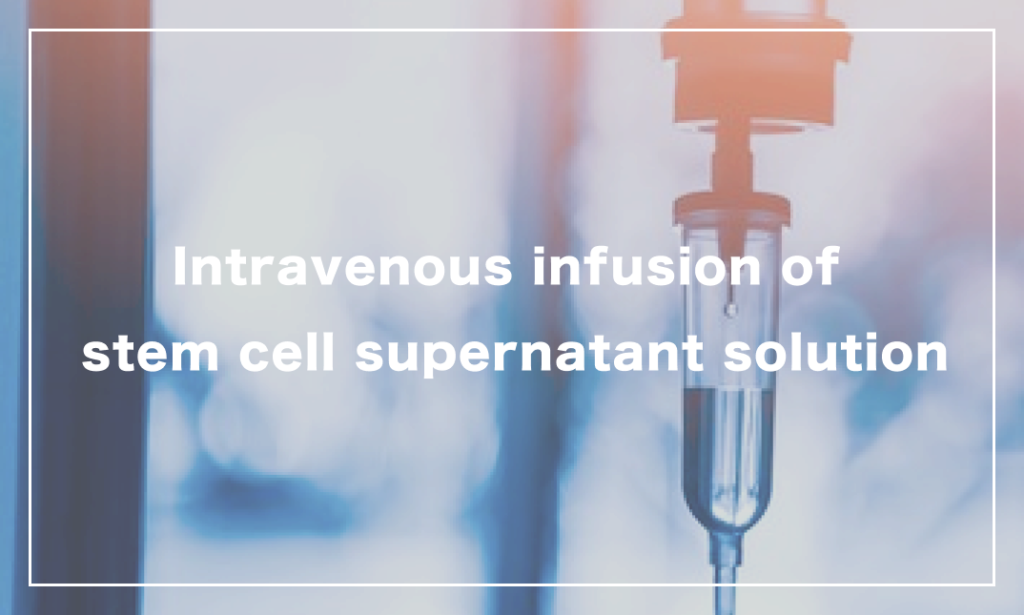
The supernatant fluid from stem cell culture contains nutrients (growth factors) for stem cells, but does not contain the stem cells themselves.
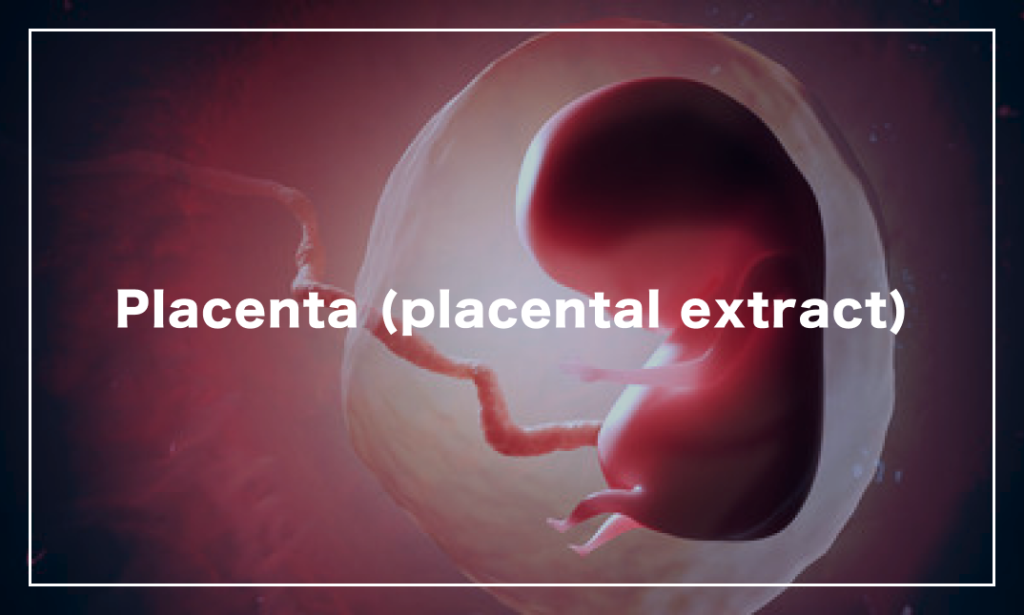
It is an ingredient extracted from the placenta and does not contain stem cells themselves.
Stem cell infusions are used for fundamental ageing care at the cellular level, while stem cell serums and stem cell supernatant infusions are used for daily care.
Autologous and allogeneic cultures
Stem cell infusion can be broadly divided into two types based on the way the cells are cultured.
There are “autologous” (i.e., the method of culturing and administering one’s own cells) and “allogeneic cultures” (i.e., the method of culturing and administering cells from another person’s culture).
Incidentally, in Japan, due to the lack of regulations on stem cell therapy, patients are not allowed to receive stem cell therapy from other parties for cosmetic purposes, and basically can only receive stem cell therapy from their own family members.
On the other hand, in Malaysia, a country with advanced stem cell technology, stem cell therapy from other families is allowed.
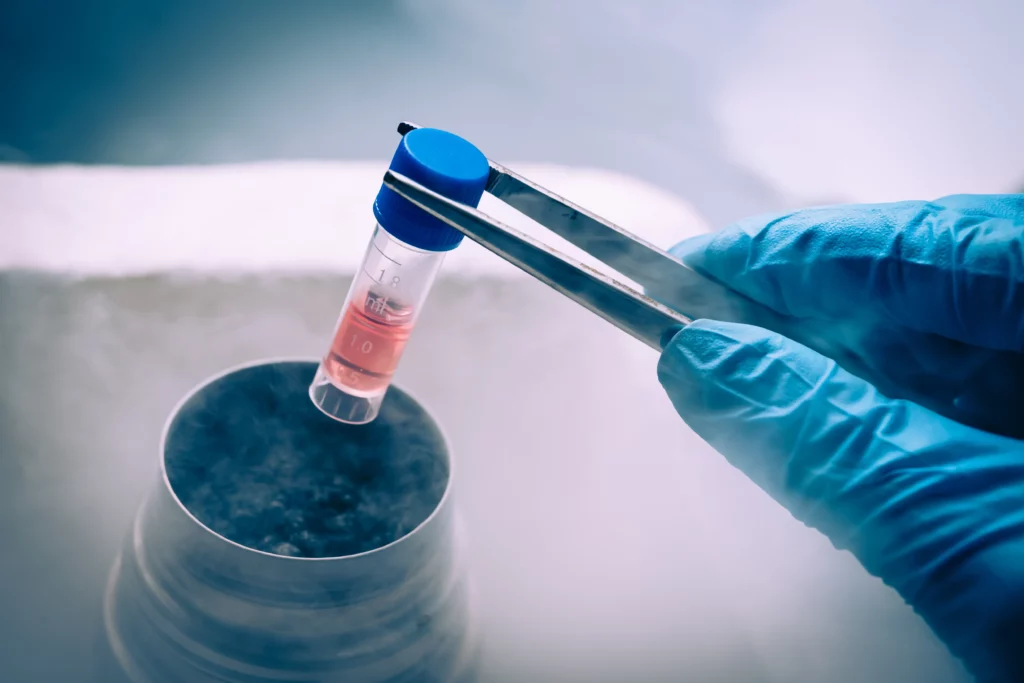
Autologous cultured stem cell infusion (mainstream in Japan)
Increase the number of stem cells of one’s own age and incorporate them into the body
→Although the number of stem cells is increased, the age of the cells remains the same and the expected effect is limited.
Stem cell infusion derived from Wharton Jelly of allogeneic cultures (Malaysia)
Cultivate 0-year-old stem cells and incorporate them into the body
→By incorporating stem cells that are much younger than yourself, you can expect significant rejuvenation effects at the cellular level.
Since this is a stem cell therapy cultured by another family, there is no need for a surgical procedure to extract your own stem cells, and you can bring out your own beauty and health to the maximum extent possible with minimal risk of the procedure.
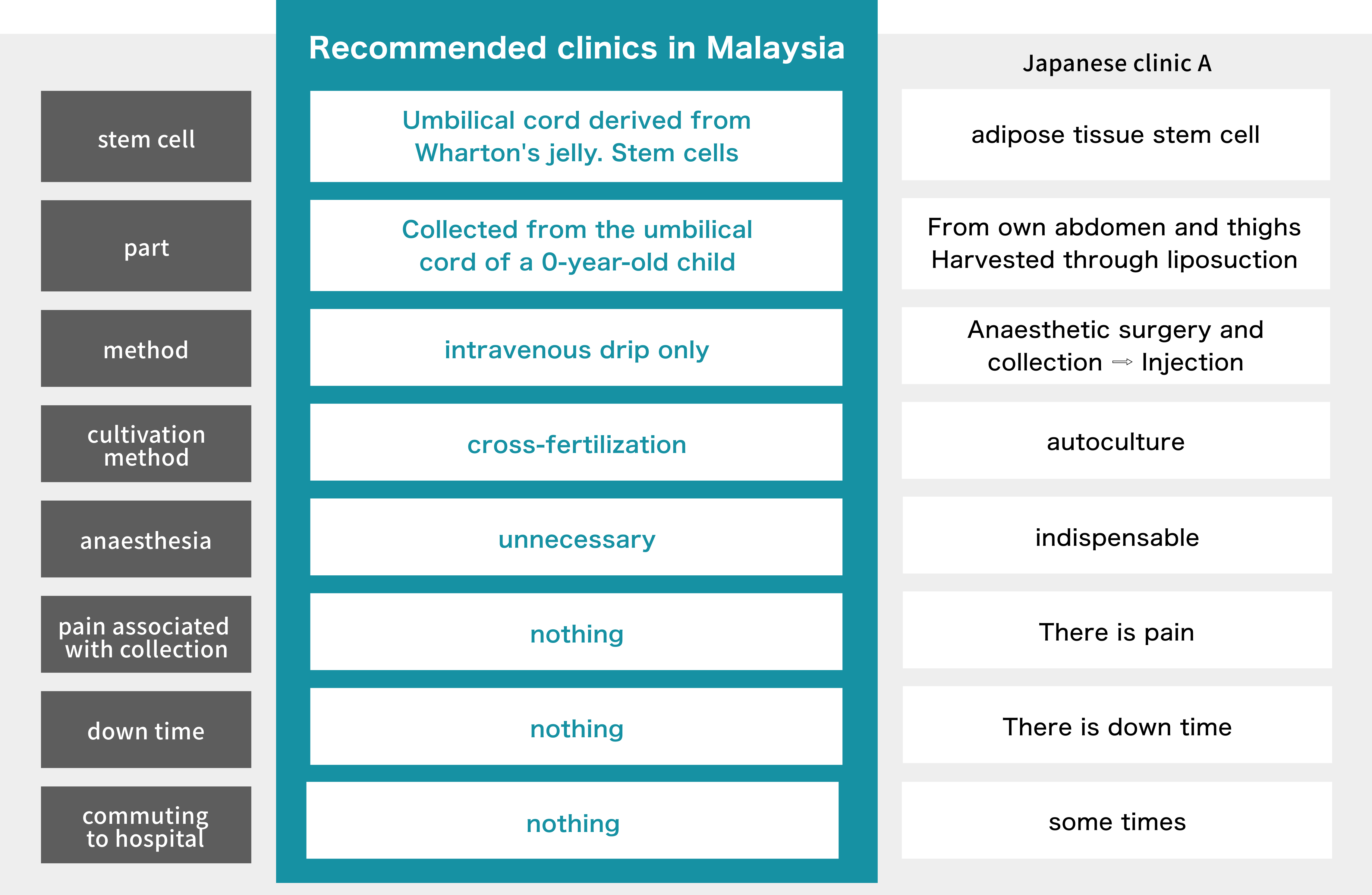
What is a stem cell infusion derived from Wharton Jelly in Malaysia?
There are various types of stem cell infusions available in Malaysia, but the most recommended in terms of expected effects and safety is the “Wharton Jelly derived stem cell infusion“.
What is a Wharton Jelly-derived stem cell infusion?
Stem cells are cultured from “Wharton’s jelly,” a jelly-like connective tissue surrounding the blood vessels of the umbilical cord (umbilical cord), and are introduced into the body.
Stem cells are cultured and incorporated into the body, making this the most advanced therapy among stem cell infusions.
Stem cell cosmetics, hyaluronic acid, Botox injections, and laser treatments are only temporary health and beauty promoting therapies.
By incorporating young, fresh, 0-year-old stem cells, it is a fundamental therapy that can be expected to rejuvenate the body at the cellular level.
By placing an intravenous infusion into a vein in the arm, the administered stem cells circulate throughout the body, repairing damaged cells and revitalizing cells throughout the body.
This promotes sustained rejuvenation by activating cells throughout the body.
Wharton Jelly Stem Cell Infusion Therapy
This is an intravenous infusion therapy using stem cells harvested from the umbilical cord of a donor, a 0-year-old child.
The administered fresh stem cells circulate in the body, repairing and regenerating damaged cells.

Stem cells were harvested from the umbilical cord of a 0-year-old

Cultivate and amplify stem cells
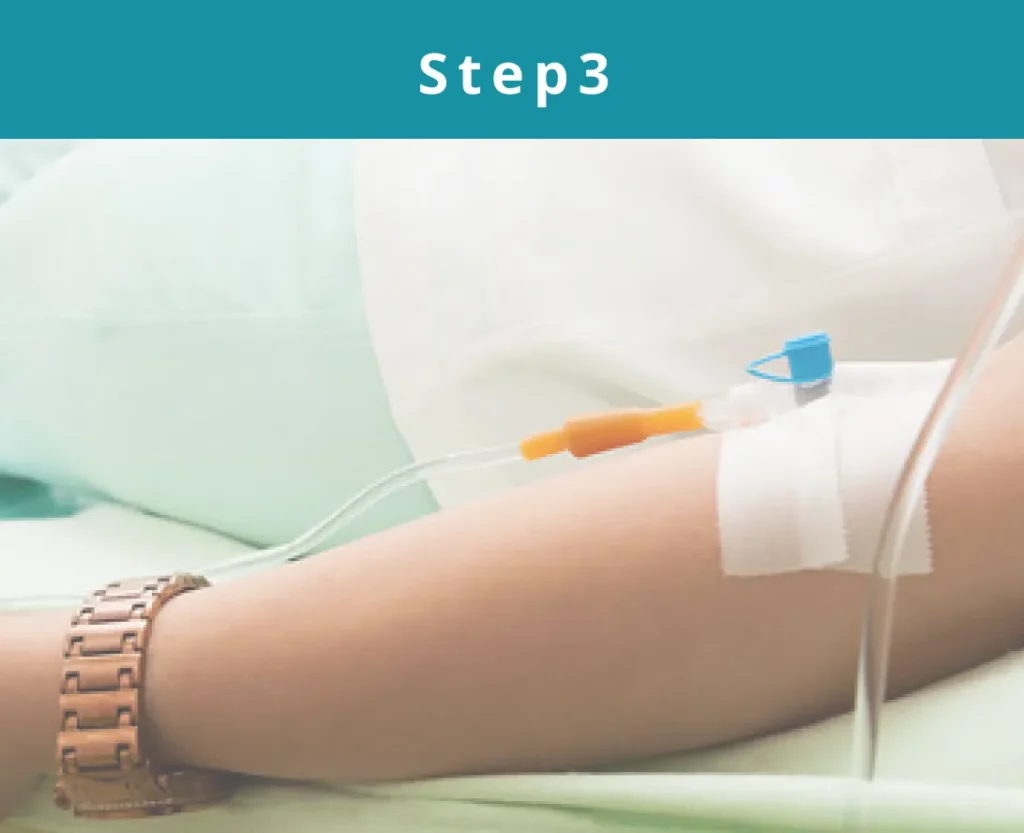
Intravenous infusion of amplified stem cells
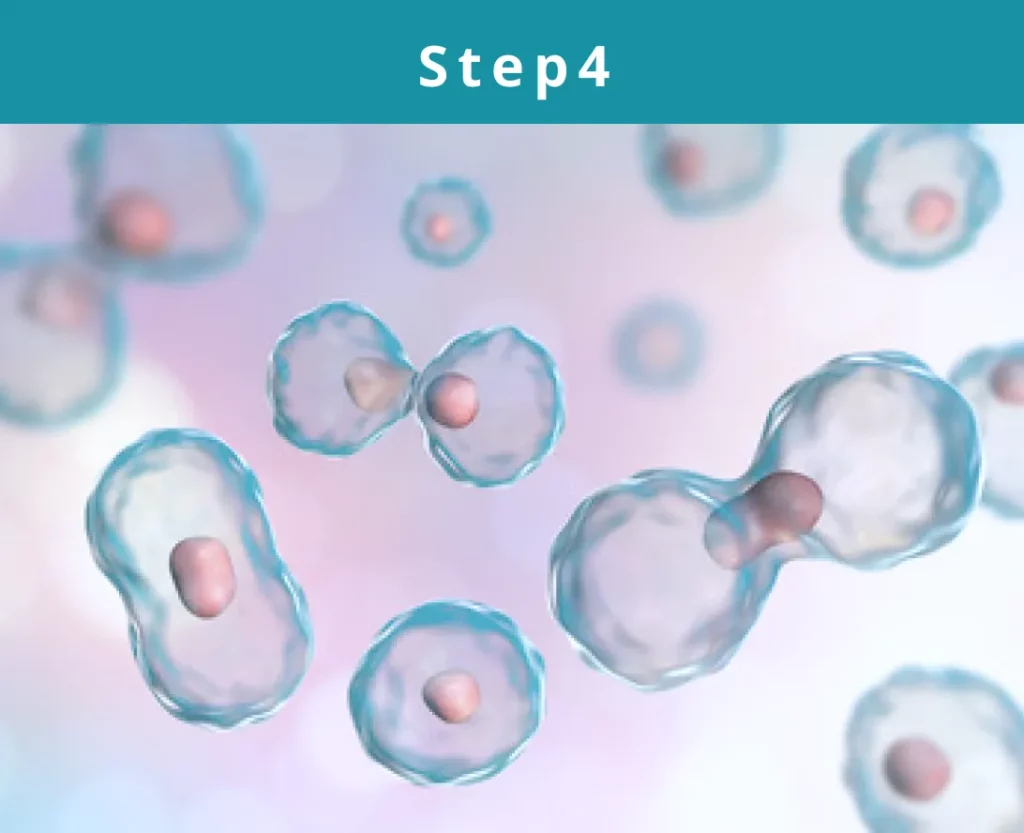
Stem cells divide in the body
Recommended for people like this!
- Focus on immediate results
- I want a painless treatment
- Do not have time to go to the clinic many times
- Seeking to improve health at the cellular level
- Have not experienced benefits from supplements, cosmetics, or other anti-aging treatments
Malaysia is a leading stem cell country
In Malaysia, the entire country is focusing on international research and development of advanced medical technology, and stem cell therapy is being put to practical use under strict regulations.
(In Japan, due to insufficient regulations on stem cell therapy, it is not possible to inject stem cells from other families for cosmetic purposes.)
In addition, the number of inactive cells (dead cells) in stem cells increases with each passing moment from culture, increasing the risk of an immune reaction when they are introduced into the body.

Only fresh stem cells are used
When receiving stem cell infusions in Malaysia, only fresh stem cells that have been shipped from the culture center on the same day or the day before and have an activity rate greater than 95% are basically used.

Meet strict criteria for donor selection
In Malaysia, stem cells are provided only from donors who meet strict criteria such as health status.

Expertise in Stem Cell Therapy Treatment by a doctor who is well versed in stem cell therapy
In Malaysia, the procedure is performed after a consultation with a doctor who is familiar with stem cell therapy.
What are the risks of stem cell infusion?
Many people are afraid of the risk of side effects when they hear the phrase “putting someone else’s cells into your body.”
The two main risks associated with stem cell infusion are as follows
(1) Blood of others (hematopoietic stem cells)
e.g.) Bone marrow stem cells have hematopoietic potential and there is a risk of mixing with other people’s blood.
They may be recognized as foreign and cause an immune reaction, with side effects such as chills, fever, etc.
(2) Low cell activity rate (many cells are dead).
e.g.) Stem cells are transported from Russia or Ukraine to Asia for infusion.
Because of the time required for transport, the activity rate is inevitably low, and the dead cells are recognized as foreign, causing an immune reaction and side effects such as chills and fever.
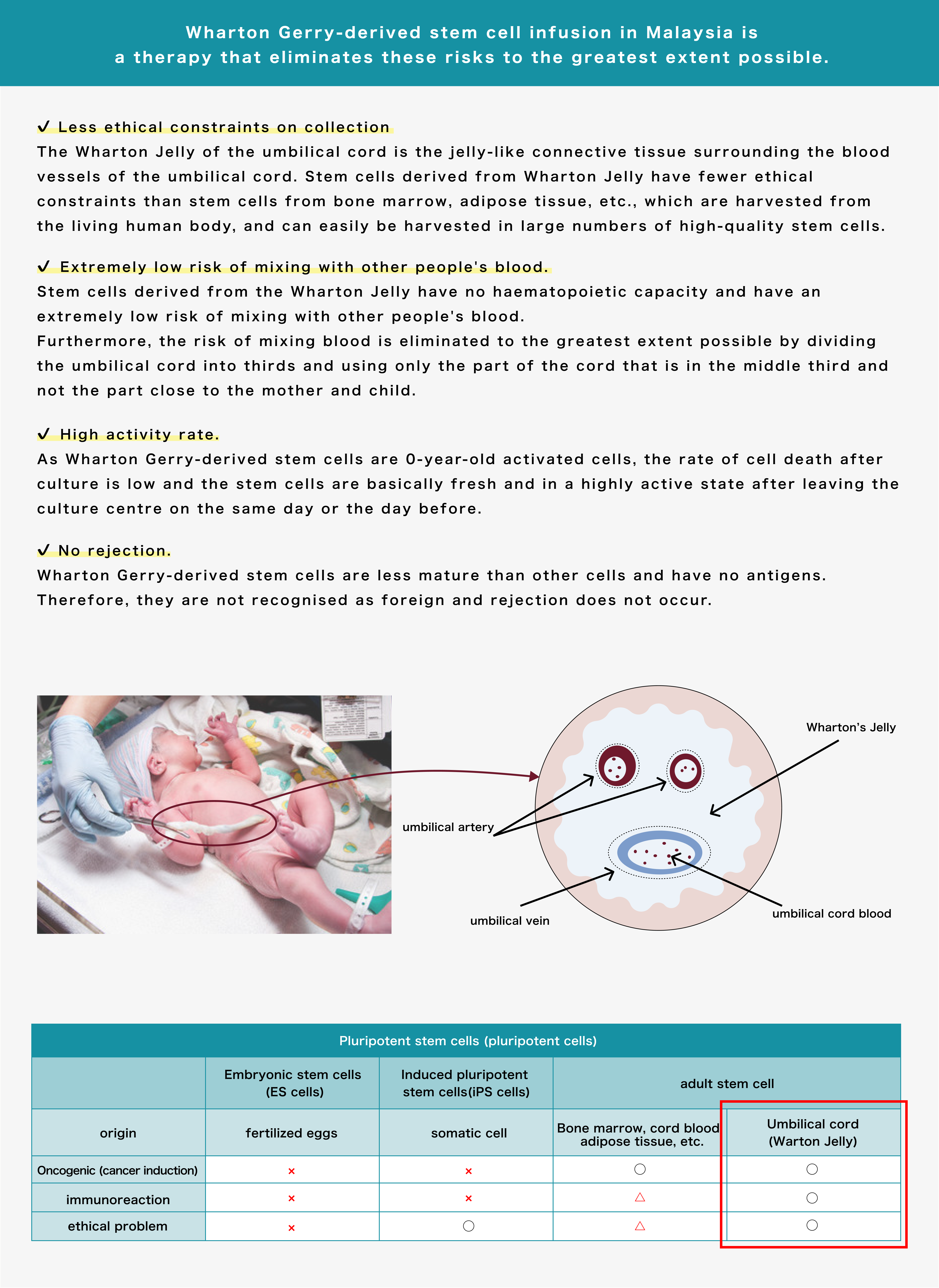
Why use umbilical cord stem cells?
1. To be ethical without harming the donor
2. Because young stem cells can be taken in
For bone marrow stem cells
Bone marrow stem cells must be collected from the human body, which poses ethical issues. And the youth of cells is proportional to the age of the donor. For example, if a 50-year-old donor takes stem cells from the bone marrow and cultures them, the cells injected into the donor are exactly the same as when the donor was 50 years old. You’re not younger or more viable than you are now, you just have more cells, which may have a temporary effect, but your cell cycle has already been lengthened.
For umbilical cord stem cells
Umbilical cord stem cells are said to be ethically good because they do not need to be harvested from the human body. Because the umbilical cord is taken from a baby, the donor’s cells are not aged and the stem cells, which are highly vital and rich in growth factors, grow and proliferate rapidly.

Testimonials
‘I sleep less, I’m less tired and my skin and body are firmer!‘
I had undergone autologous cultured stem cell therapy at a well-known Japanese plastic surgery clinic specialising in regenerative medicine at a cost of over 3 million yen, but I could not feel any effects at all. However, the Wharton Jelly-derived stem cell infusion I received in Malaysia, to my surprise, I felt the effects on the third day after the treatment and was very impressed.
I used to have a hard time getting up early, but now I am able to get up early and work progressively. Furthermore, my metabolism has increased and my muscles are easier to build up, so I consider it a ‘muscle saving period’ and I am working hard on my muscle training. As a result, I have become much more toned, with results such as cracked pecs, etc. I feel more energetic than when I was in my thirties, and I feel more fit than I have in the last ten years.
Mr. S
40s / Male / Manager
‘My menopause has improved and my skin turns over faster!’
I was suffering from menopausal symptoms, but after the infusion I was amazed at the improvement and now my symptoms are completely gone. It was especially difficult to get up in the morning, but now I can get up crisply and am less tired.
I also feel that the turnover of my skin has accelerated, and my daughter and friends often praise me, saying that my skin has a better glow and that I look younger.
Mrs. Y
50s/Female/Manager
*The areas of the body where the experience is felt and the way it is felt varies from person to person.
Actual treatment
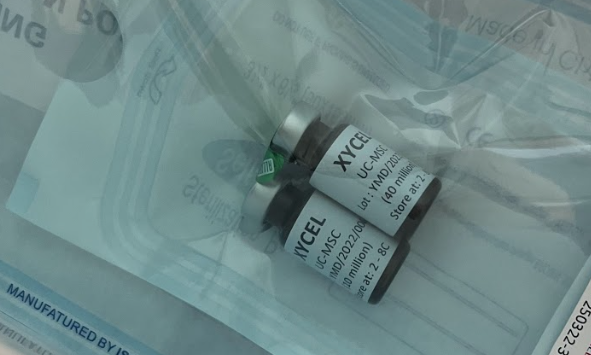
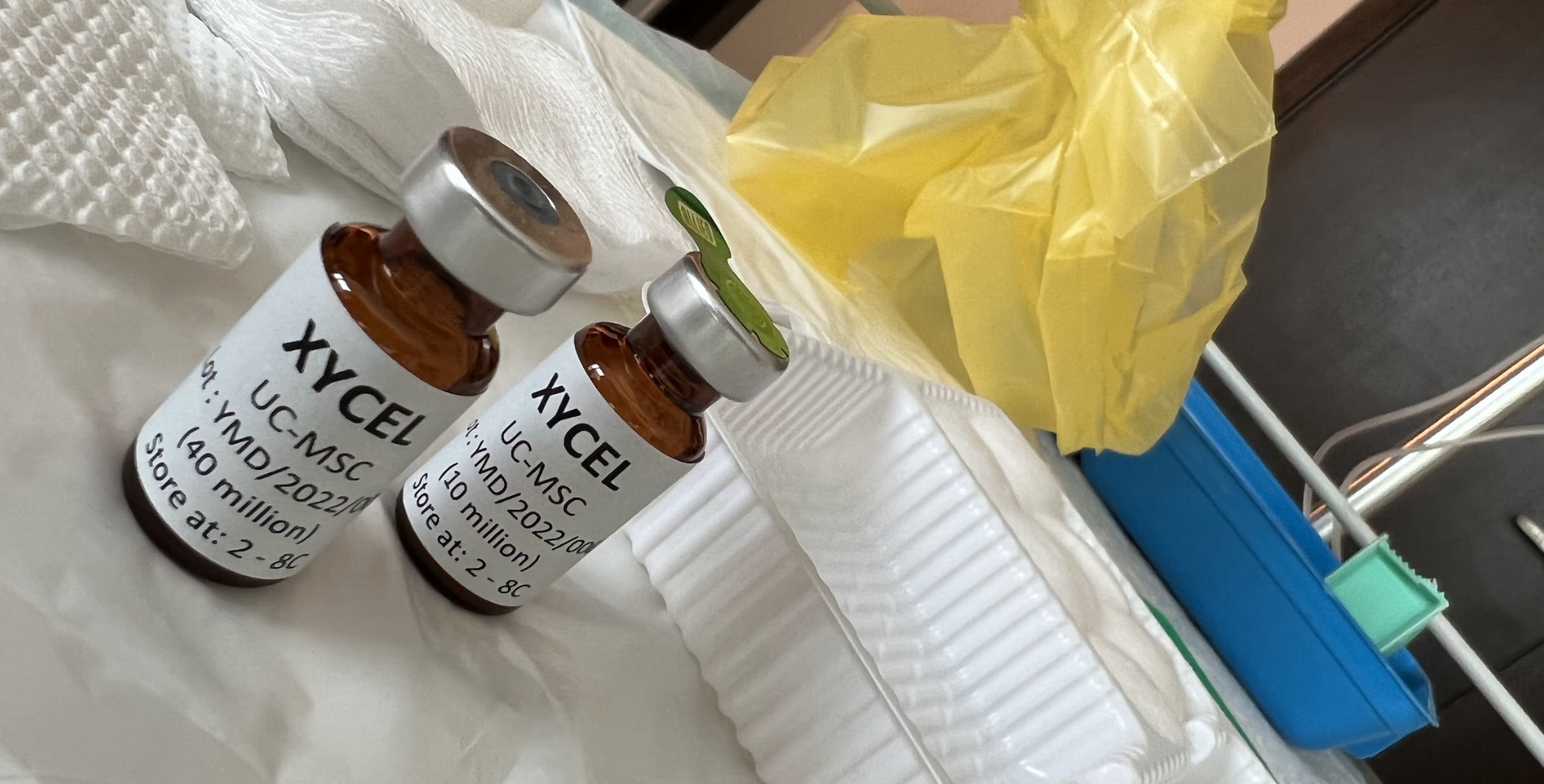
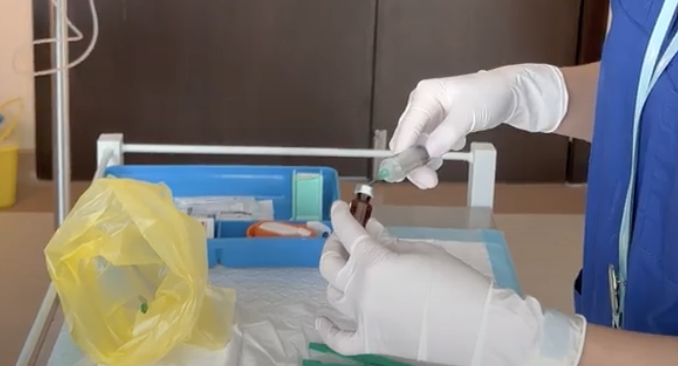
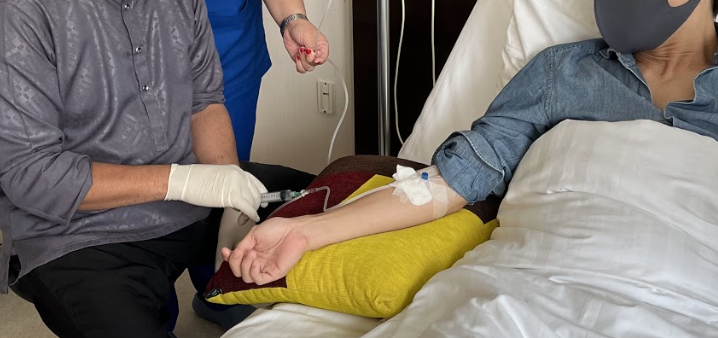
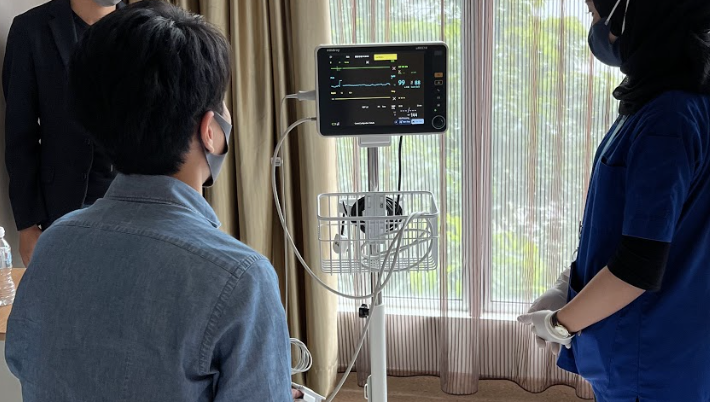

Stem cell infusion experience in Malaysia
You can travel to Kuala Lumpur, the capital of Malaysia, for as little as three days and two nights to receive stem cell infusion treatment.
On site, Japanese staff will guide you to the clinic and interpret for you, so don’t worry if your English is not good enough.

Steps to the treatment
The treatment is available approximately two to three months after application.

▶︎ People who are not eligible for stem cell therapy
Patients with cancer or infections are not eligible for stem cell therapy. Please note that.
▶︎ supplementary information
The pharmaceutical companies and clinics we provide access to culture and amplify stem cells in strict adherence to patented and reliable guidelines. This includes immunophenotyping and endotoxin testing in compliance with Good Manufacturing Practice (GMP). They also have unique immunomodulatory functions, strong durability in allogeneic and heterogeneous environments (transplanted into different people) and are considered safe.

